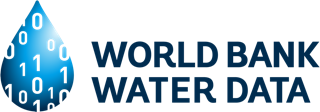The Ukraine Demographic and Health Survey (UDHS) is a nationally representative survey of 6,841 women age 15-49 and 3,178 men age 15-49. Survey fieldwork was conducted during the period July through November 2007. The UDHS was conducted by the Ukrainian Center for Social Reforms in close collaboration with the State Statistical Committee of Ukraine. The MEASURE DHS Project provided technical support for the survey. The U.S. Agency for International Development/Kyiv Regional Mission to Ukraine, Moldova, and Belarus provided funding. The survey is a nationally representative sample survey designed to provide information on population and health issues in Ukraine. The primary goal of the survey was to develop a single integrated set of demographic and health data for the population of the Ukraine. The UDHS was conducted from July to November 2007 by the Ukrainian Center for Social Reforms (UCSR) in close collaboration with the State Statistical Committee (SSC) of Ukraine, which provided organizational and methodological support. Macro International Inc. provided technical assistance for the survey through the MEASURE DHS project. USAID/Kyiv Regional Mission to Ukraine, Moldova and Belarus provided funding for the survey through the MEASURE DHS project. MEASURE DHS is sponsored by the United States Agency for International Development (USAID) to assist countries worldwide in obtaining information on key population and health indicators. The 2007 UDHS collected national- and regional-level data on fertility and contraceptive use, maternal health, adult health and life style, infant and child mortality, tuberculosis, and HIV/AIDS and other sexually transmitted diseases. The survey obtained detailed information on these issues from women of reproductive age and, on certain topics, from men as well. The results of the 2007 UDHS are intended to provide the information needed to evaluate existing social programs and to design new strategies for improving the health of Ukrainians and health services for the people of Ukraine. The 2007 UDHS also contributes to the growing international database on demographic and health-related variables. MAIN RESULTS Fertility rates. A useful index of the level of fertility is the total fertility rate (TFR), which indicates the number of children a woman would have if she passed through the childbearing ages at the current age-specific fertility rates (ASFR). The TFR, estimated for the three-year period preceding the survey, is 1.2 children per woman. This is below replacement level. Contraception : Knowledge and ever use. Knowledge of contraception is widespread in Ukraine. Among married women, knowledge of at least one method is universal (99 percent). On average, married women reported knowledge of seven methods of contraception. Eighty-nine percent of married women have used a method of contraception at some time. Abortion rates. The use of abortion can be measured by the total abortion rate (TAR), which indicates the number of abortions a woman would have in her lifetime if she passed through her childbearing years at the current age-specific abortion rates. The UDHS estimate of the TAR indicates that a woman in Ukraine will have an average of 0.4 abortions during her lifetime. This rate is considerably lower than the comparable rate in the 1999 Ukraine Reproductive Health Survey (URHS) of 1.6. Despite this decline, among pregnancies ending in the three years preceding the survey, one in four pregnancies (25 percent) ended in an induced abortion. Antenatal care. Ukraine has a well-developed health system with an extensive infrastructure of facilities that provide maternal care services. Overall, the levels of antenatal care and delivery assistance are high. Virtually all mothers receive antenatal care from professional health providers (doctors, nurses, and midwives) with negligible differences between urban and rural areas. Seventy-five percent of pregnant women have six or more antenatal care visits; 27 percent have 15 or more ANC visits. The percentage is slightly higher in rural areas than in urban areas (78 percent compared with 73 percent). However, a smaller proportion of rural women than urban women have 15 or more antenatal care visits (23 percent and 29 percent, respectively). HIV/AIDS and other sexually transmitted infections : The currently low level of HIV infection in Ukraine provides a unique window of opportunity for early targeted interventions to prevent further spread of the disease. However, the increases in the cumulative incidence of HIV infection suggest that this window of opportunity is rapidly closing. Adult Health : The major causes of death in Ukraine are similar to those in industrialized countries (cardiovascular diseases, cancer, and accidents), but there is also a rising incidence of certain infectious diseases, such as multidrug-resistant tuberculosis. Women's status : Sixty-four percent of married women make decisions on their own about their own health care, 33 percent decide jointly with their husband/partner, and 1 percent say that their husband or someone else is the primary decisionmaker about the woman's own health care. Domestic Violence : Overall, 17 percent of women age 15-49 experienced some type of physical violence between age 15 and the time of the survey. Nine percent of all women experienced at least one episode of violence in the 12 months preceding the survey. One percent of the women said they had often been subjected to violent physical acts during the past year. Overall, the data indicate that husbands are the main perpetrators of physical violence against women. Human Trafficking : The UDHS collected information on respondents' awareness of human trafficking in Ukraine and, if applicable, knowledge about any household members who had been the victim of human trafficking during the three years preceding the survey. More than half (52 percent) of respondents to the household questionnaire reported that they had heard of a person experiencing this problem and 10 percent reported that they knew personally someone who had experienced human trafficking.


